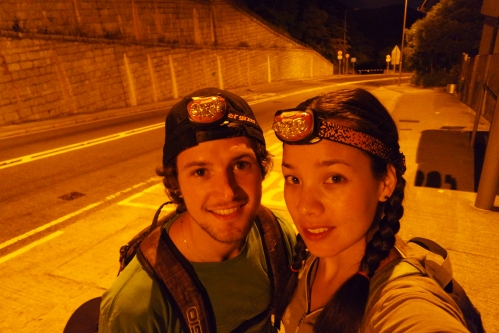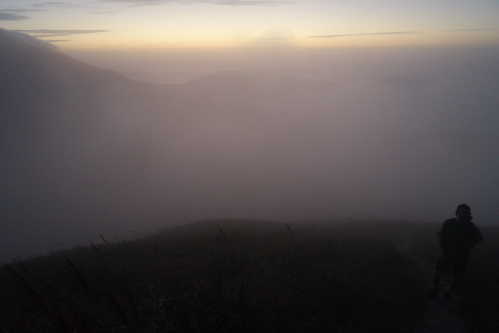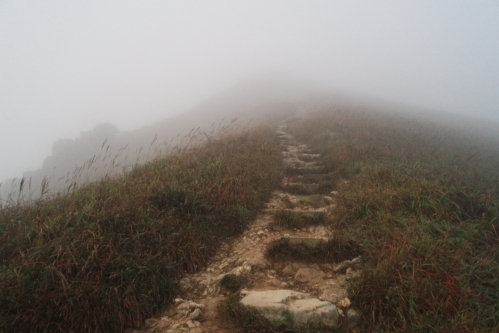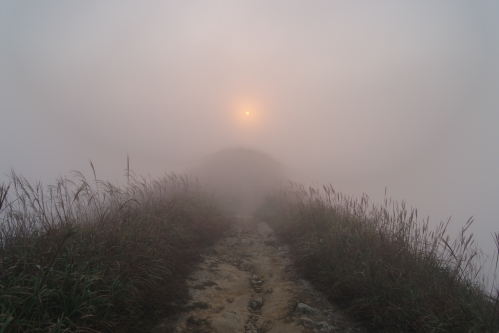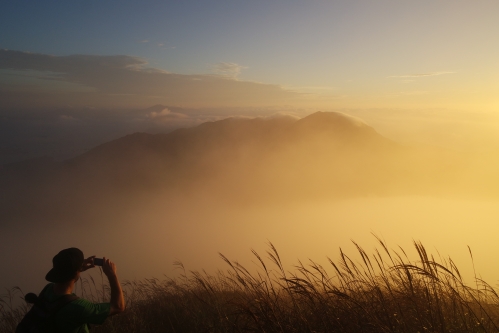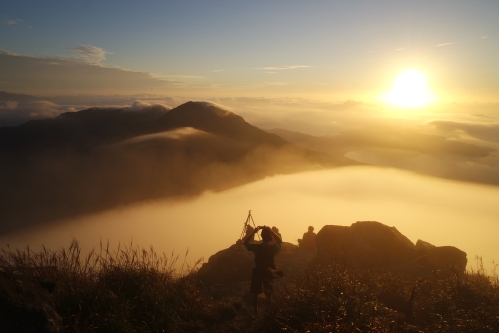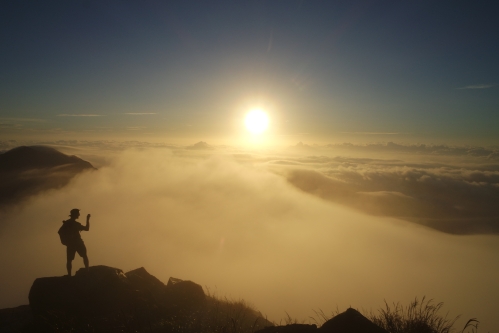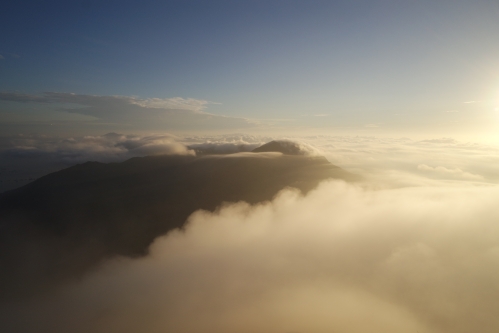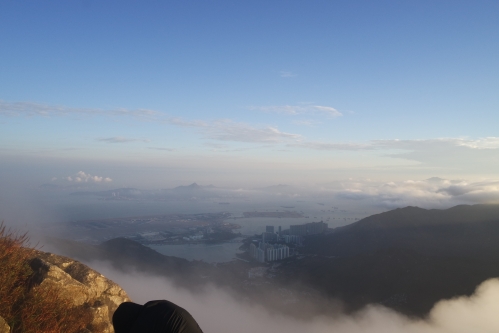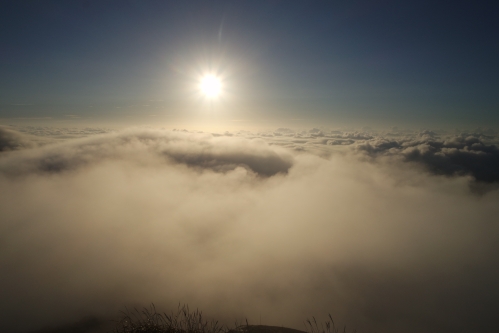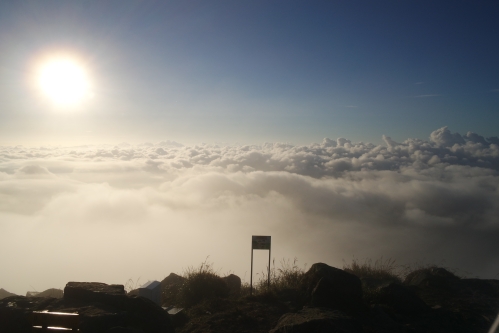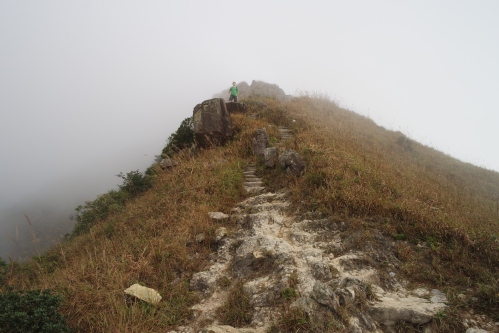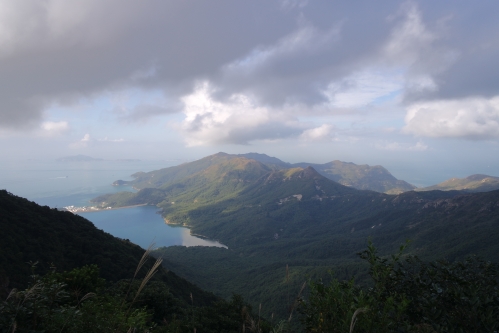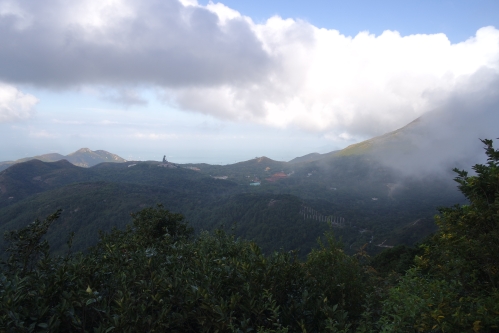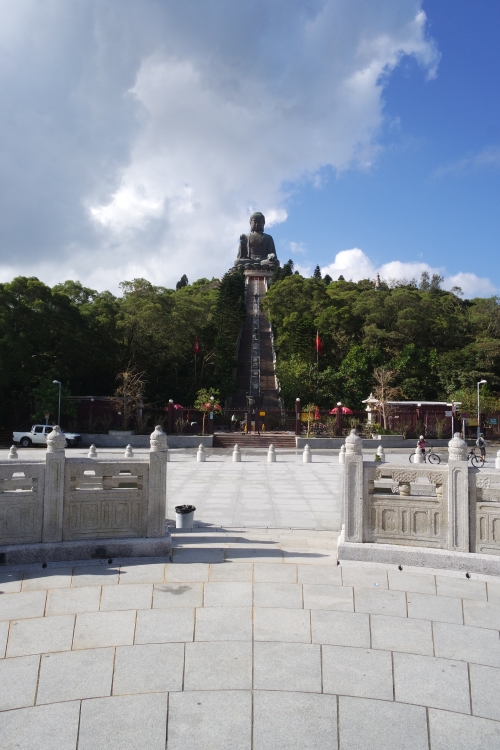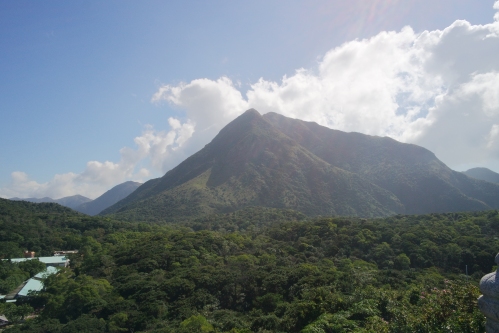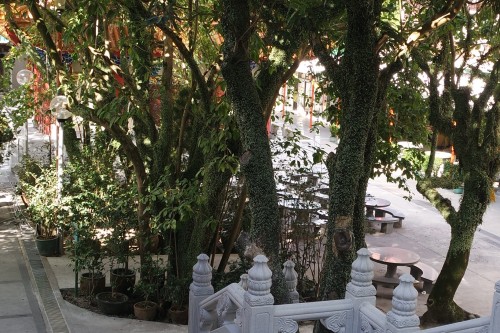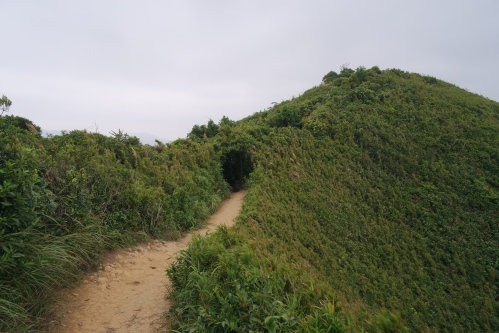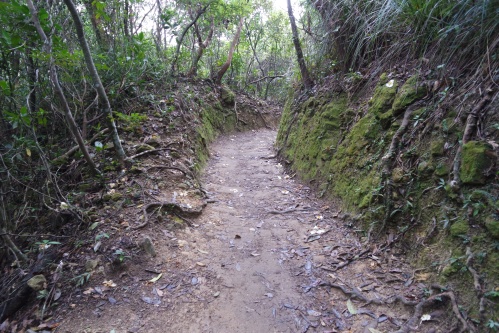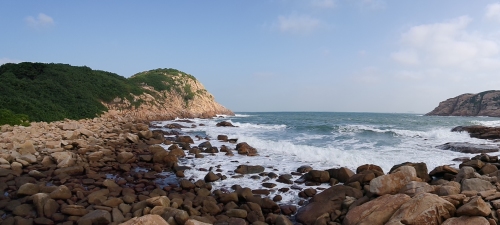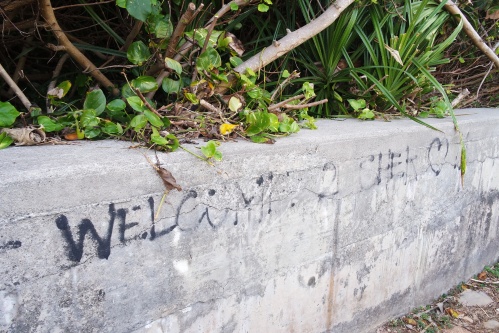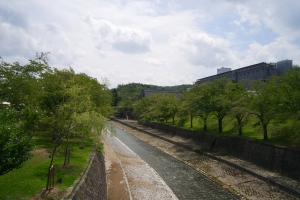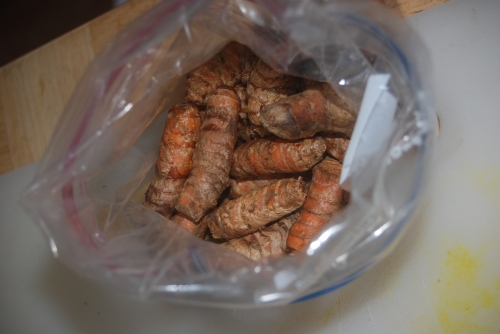When Pretty Boy and I were in Hong Kong in November 2015, we did two big hikes: Lantau Peak at sunrise and Dragon’s Back. Here are some pictures I took while on those adventures.
In the wee, wee morning at the beginning of our journey to Lantau Peak at sunrise, it took us some time to find a taxi at 3 am in Tung Chung, but we finally did. We took the taxi to the Pak Kung Au bus stop where the trail is supposed to start. As the taxi sped away, we sure hoped we could find the trail head. The first bus wasn’t due for another 3 hours if we couldn’t…
We did find the trail and started the hike. No pictures from the first few hours because it was still dark, but eventually, the sky started to lighten. We weren’t yet at the summit, so we started powering up the steps, hoping to make it to the peak in time to see the sunrise.
We didn’t make it to the very top in time for sunrise, but luckily strategically, we started on the east side of the peak, so the sunrise was at our backs rather than hidden behind the peak, and we saw when the sun rose over the low dense clouds, though it was still partially obscured by the cloud in which we were.
By the time we made it to the peak, the clouds were intermittent, so we’d be alternately blasted by sun and enveloped in chilly cloud (made extra chilly by how sweaty we were after racing to the top). The view was also alternately exposed and obscured by clouds, but we hung out for about an hour watching different parts of Hong Kong and the amazing clouds come and go from view. At one point, we could see all the way to Hong Kong Island.
The peak is less than 1 km above sea level (934 m), but its still the tallest peak on Lantau Island and the second tallest in all of Hong Kong, so we felt on top of the world.
We continued along the trail, down the west side of the peak to Ngong Ping and the Big Buddha.
We’ve visited Ngong Ping village and the Big Buddha (officially Tian Tan Buddha) every time we’ve been in Hong Kong. Its one of our favorite places in the world because of the beauty, peaceful vibes, and tofu faa, though the energy was majorly disrupted on our previous visit by hordes of tourists visiting the kitschy tourist attractions that have been built up in Ngong Ping. We discovered the key for us is to go after hiking to the top of Lantau Peak at sunrise! The hike put us in a pretty exhausted, mellow mood, and we arrived in Ngong Ping before the cable car, Big Buddha, and all the other attractions opened, so there were essentially no other tourists (just a few devout followers and hard core cyclists).
We waited around for everything to open at 8 am so we could walk up the stairs, visit the Big Buddha, and have tofu faa. We then took the bus from Ngong Ping back to Tung Chung for a shower and nap.
The positives were discovering a good time (of day) for us to visit the Big Buddha and the amazing views. The negatives were partial to heavy cloud cover and the amount of trash (and heavy odor of urine) left at the summit. Results of the hike becoming so popular. We were at the summit with people who had camped over night there in order to see the sunrise, though they didn’t look happy or warm to us. I’m definitely glad we did the hike, and I would definitely do it again with an eye on the forecast and some garbage bags for picking up some litter.
I also think approaching the summit from the east was a great idea. The approach from the west may be faster, but its also steeper, a prospect that terrifies me in the best of conditions. I couldn’t imagine attempting it in the dark or in a cloud or both. And if you’re running late (as we often are), the sunrise is still visible from the east.
Later on the same visit to Hong Kong, we went to the Southern District of Hong Kong Island to hike the Dragon’s Back, rated one of the top hikes in all of Asia, and visit Big Wave Bay and Shek O village. We took all the trains and buses to get us there and back since we were staying in Tung Chung and met Dr. Sam in Wan Chai for dinner afterwards (2 MTR trains and a bus to get there; a bus, the longest trolley ride, and an MTR train to get back), but we love the public transport in Hong Kong! It was all part of the adventure.
We were in the company of several other hikers on the bus that stopped at the trail head (though we were probably the youngest by half), so we knew we were in the right place. So different from how we felt starting the Lantau Peak hike. We hit the trail quickly and left most of the other hikers behind. The weather wasn’t the best for hiking that day. The views around us on top of the Dragon’s Back ridge were amazing but hazy, so the pictures aren’t very nice. And it was crazy windy at the top of the ridge, so we didn’t linger too long.
After the top of the ridge, the trail wrapped around a peak in the Shek O Country Park and dropped us down in Big Wave Bay.
Big Wave Bay apparently has the best surfing in Hong Kong, though they have a shark net at the bay entrance which breaks the waves up and makes them less nice for surfing. The weather was still cloudy and dreary, but there were a fair few surfers out (even though winter is not the beach season to most Hong Kong residents), and Pretty Boy couldn’t resist. He rented a board and played in the waves for a bit before we continued on. We walked down the road to Shek O village, while the clouds finally clear off and the sun came out.
We really enjoyed walking around and seeing Shek O, but I didn’t take any pictures of it. It always amazing me that it only takes a few relatively short public transport rides to feel like I’m so far removed from the bustle of Hong Kong and the rest of the world. Its one of my favorite things about Hong Kong. After our visit and a really good cup of nai chai at the cafe across the street from the bus stop, we started our long trip back to civilization.

